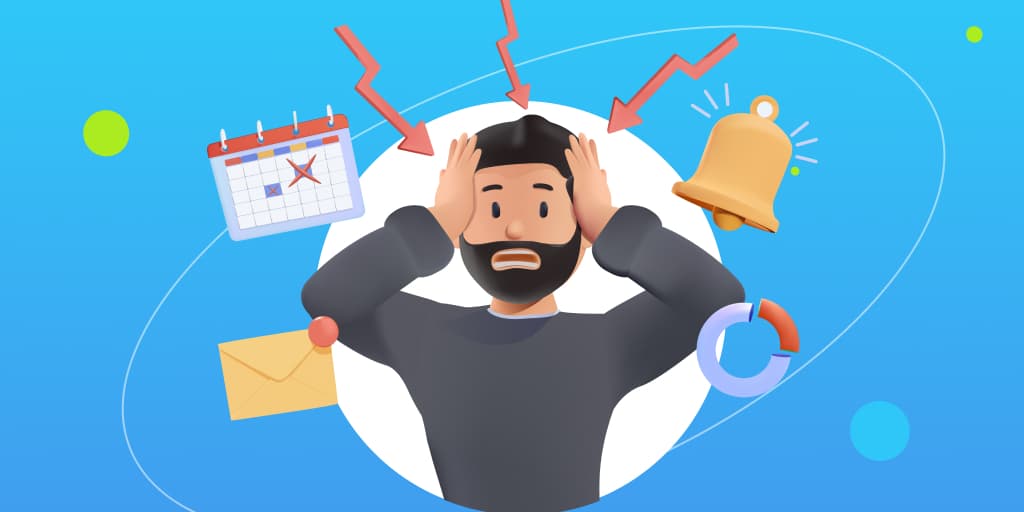The digital landscape is evolving at breakneck speed, and small businesses that fail to adapt aren't just falling behind—they're becoming irrelevant. While large corporations have dedicated teams to navigate these changes, small businesses often struggle to keep pace with the constant evolution of digital marketing, customer expectations, and technology.
But here's the opportunity: these same trends that seem overwhelming can become your competitive advantage. Early adoption of emerging digital trends has always been where small businesses can outmaneuver larger competitors, moving faster and implementing changes that big companies take months to approve.
2025 isn't just another year—it's a pivotal moment where artificial intelligence, changing search behaviors, and evolving customer expectations are reshaping how businesses connect with their audiences. The businesses that embrace these trends now will dominate their markets, while those that wait will spend years playing catch-up.
The Small Business Digital Advantage
Small businesses have unique advantages in adopting new digital trends. You can pivot quickly, test new approaches without corporate bureaucracy, and build personal relationships with customers that large companies can't replicate. The key is understanding which trends will actually impact your business and implementing them strategically rather than chasing every shiny new technology.
The most successful small businesses in 2025 won't be those with the biggest budgets—they'll be those that understand their customers' evolving needs and use technology to serve them better.
AI-Driven Marketing: Your New Secret Weapon
Artificial intelligence isn't just for tech giants anymore. AI-powered marketing tools are now accessible to small businesses, offering capabilities that were impossible just a few years ago. This isn't about replacing human creativity—it's about amplifying your marketing efforts and making data-driven decisions that drive real results.
Personalization at Scale
AI enables small businesses to deliver personalized experiences that previously required large marketing teams. Email marketing platforms now use AI to optimize send times, subject lines, and content for individual recipients. Your website can display different content based on visitor behavior, location, and interests.
This personalization isn't just nice-to-have—customers now expect it. Businesses that provide generic, one-size-fits-all experiences lose customers to competitors who understand their specific needs and preferences.
Predictive Analytics for Better Decisions
AI tools can analyze your customer data to predict future behavior, helping you identify which leads are most likely to convert, which customers might churn, and what products or services to promote to specific segments.
Instead of guessing what your customers want, you can use AI insights to make strategic decisions based on actual data patterns. This level of insight was previously available only to large enterprises with dedicated analytics teams.
Content Creation and Optimization
AI writing tools can help generate blog post ideas, social media content, and even first drafts of marketing copy. While human creativity and expertise remain essential, AI can handle routine content creation tasks, freeing you to focus on strategy and customer relationships.
Use AI to optimize your content for search engines, generate multiple versions of ad copy for testing, and create personalized email campaigns that speak directly to individual customer segments.
Chatbots and Conversational Marketing
Modern customers expect instant responses to their questions, regardless of the time of day. Chatbots have evolved from simple FAQ responders to sophisticated conversation partners that can qualify leads, schedule appointments, and provide personalized recommendations.
Beyond Basic Customer Service
Today's chatbots can handle complex interactions that move prospects through your sales funnel. They can collect contact information, understand customer needs, and direct qualified leads to your sales team while filtering out tire-kickers.
The key is designing chatbot conversations that feel natural and helpful rather than robotic and frustrating. Focus on solving common customer problems and providing genuine value, not just capturing contact information.
Integration with Your Sales Process
Effective chatbots integrate seamlessly with your existing sales and marketing systems. When a chatbot identifies a qualified lead, it should automatically add them to your CRM, schedule follow-up tasks, and provide your sales team with conversation context.
This integration ensures no leads fall through the cracks while providing customers with consistent experiences across all touchpoints.
Multilingual and Voice Capabilities
Advanced chatbots can communicate in multiple languages and even handle voice interactions, expanding your potential customer base and accommodating different communication preferences.
As voice search and smart speakers become more prevalent, voice-enabled chatbots position your business for the future of customer interaction.
Voice Search Optimization: The New SEO Frontier
Voice search is fundamentally changing how customers find businesses online. People speak differently than they type, using longer, more conversational queries. "Best pizza restaurant" becomes "Where's the best pizza place near me that's open now?"
Conversational Keyword Strategy
Optimize your content for the questions customers actually ask out loud. These tend to be longer, more specific, and often include words like "how," "what," "where," and "when." Create content that answers these natural language queries directly and comprehensively.
Consider the context of voice searches—people often search while driving, cooking, or multitasking. They want quick, actionable answers, not lengthy explanations they can't easily consume.
Featured Snippet Optimization
Voice assistants often read featured snippets as answers to voice queries. Structure your content to appear in these coveted "position zero" results by providing clear, concise answers to common questions in your industry.
Use proper heading tags, bullet points, and numbered lists to help search engines understand your content structure and increase your chances of being selected as a featured snippet.
Local Voice Search Dominance
Voice searches are three times more likely to be local than text searches. Optimize for phrases like "near me," include local landmarks in your content, and ensure your Google Business Profile is completely optimized for voice search queries.
User-First Design: Beyond Pretty Websites
User experience has evolved beyond visual design to encompass every aspect of how customers interact with your digital presence. In 2025, user-first design means creating experiences that prioritize customer needs over business goals—which ultimately serves both.
Performance as User Experience
Website speed isn't just a technical consideration—it's a core user experience element. Slow websites frustrate users and signal unprofessionalism. Google's Core Web Vitals now factor page experience into search rankings, making performance optimization essential for visibility.
Focus on loading speed, interactivity, and visual stability. Users should be able to interact with your site immediately without waiting for elements to load or shift around.
Accessibility for All Users
Designing for accessibility isn't just about compliance—it's about reaching the broadest possible audience. Accessible websites work better for everyone, not just users with disabilities.
Implement proper heading structures, ensure sufficient color contrast, provide alt text for images, and design forms that work with screen readers. These improvements often enhance the experience for all users while expanding your potential customer base.
Mobile-First Everything
Mobile traffic continues to dominate, but mobile-first design goes beyond responsive layouts. Consider how users interact with your site on mobile devices—they're often distracted, using one hand, or in poor lighting conditions.
Design larger tap targets, simplify navigation, and prioritize the most important information. What works on desktop doesn't necessarily work on mobile, even if it technically functions.
Video-First Content Strategy
Video consumption continues to explode, with short-form video leading the charge. Platforms like TikTok, Instagram Reels, and YouTube Shorts have changed how customers discover and engage with businesses.
Authentic Over Polished
The most successful business videos in 2025 prioritize authenticity over production value. Customers want to see real people solving real problems, not heavily produced corporate content.
Share behind-the-scenes content, explain your processes, and showcase your team's personality. This human connection builds trust and differentiates your business from competitors hiding behind corporate facades.
Educational Content Dominance
Create videos that teach customers something valuable rather than just promoting your services. How-to videos, industry insights, and problem-solving content establish expertise while providing genuine value.
This educational approach builds trust and positions your business as a helpful resource rather than just another vendor trying to make a sale.
Platform-Specific Optimization
Different platforms favor different video formats and styles. What works on LinkedIn might not work on TikTok. Understand each platform's audience and optimize your content accordingly rather than using a one-size-fits-all approach.
Privacy-First Marketing
Growing privacy concerns and regulations like GDPR have fundamentally changed digital marketing. Customers are more aware of data collection and expect transparency about how their information is used.
First-Party Data Strategy
With third-party cookies disappearing, businesses must focus on collecting first-party data directly from customers. This means creating valuable content and experiences that customers willingly exchange their information to access.
Build email lists through valuable lead magnets, create customer accounts that provide ongoing value, and use surveys and feedback forms to understand customer preferences directly.
Transparent Data Practices
Clearly communicate what data you collect, how you use it, and what value customers receive in return. Privacy policies should be understandable, not legal documents designed to hide information.
This transparency builds trust and can become a competitive advantage as customers gravitate toward businesses that respect their privacy.
Social Commerce Integration
Social media platforms are becoming shopping destinations, not just discovery channels. Features like Instagram Shopping, Facebook Marketplace, and TikTok Shop allow customers to purchase directly without leaving their social feeds.
Seamless Shopping Experiences
Integrate your product catalog with social platforms to reduce friction between discovery and purchase. Customers who can buy immediately are more likely to complete transactions than those who must navigate to separate websites.
This integration is particularly powerful for product-based businesses but service businesses can use it for booking consultations or purchasing digital products.
Influencer and User-Generated Content
Collaborate with micro-influencers and encourage customer-generated content that showcases your products or services in authentic settings. This social proof is more trusted than traditional advertising and often more cost-effective.
Subscription and Recurring Revenue Models
The subscription economy continues to grow as customers prefer ongoing relationships over one-time transactions. Even traditionally transactional businesses are finding ways to create recurring revenue streams.
Service-Based Subscriptions
Web design businesses offer monthly maintenance packages, marketing consultants provide ongoing strategy sessions, and app developers offer regular updates and support. These models provide predictable revenue while building stronger customer relationships.
Digital Product Subscriptions
Create digital products that provide ongoing value—exclusive content, regular reports, or access to tools and resources. These products can generate recurring revenue while establishing your expertise and maintaining customer engagement.
Implementation: Where to Start
Don't try to implement every trend simultaneously. Start with the trends most relevant to your business model and customer base:
- AI-driven personalization if you have significant customer data
- Chatbots if you receive many similar inquiries
- Voice search optimization for local businesses
- Video content for visual or educational services
- Privacy-first practices for any business collecting customer data
The Competitive Advantage
The businesses that will dominate in 2025 aren't those with the biggest budgets—they're those that understand their customers' evolving needs and use these digital trends strategically to serve them better.
Start with one or two trends that align with your business goals and customer needs. Master these before expanding to others. The key is consistent implementation rather than sporadic experimentation.
Your competitors are likely still debating whether these trends matter. While they're discussing, you can be implementing—creating the competitive advantage that will define your market position for years to come.
Your Digital Future Starts Now
These aren't distant trends—they're current realities that forward-thinking businesses are already leveraging. The question isn't whether these trends will impact your business, but whether you'll be ahead of or behind the curve when they fully mature.
The opportunity is now. Your customers are already expecting these enhanced digital experiences, and businesses that provide them will capture market share from those still operating with outdated approaches.
Don't wait for these trends to become requirements. Start implementing them now, while you can still gain competitive advantage from early adoption.
Ready to future-proof your business? These digital trends are your roadmap to staying ahead of the competition and meeting your customers' evolving expectations.




